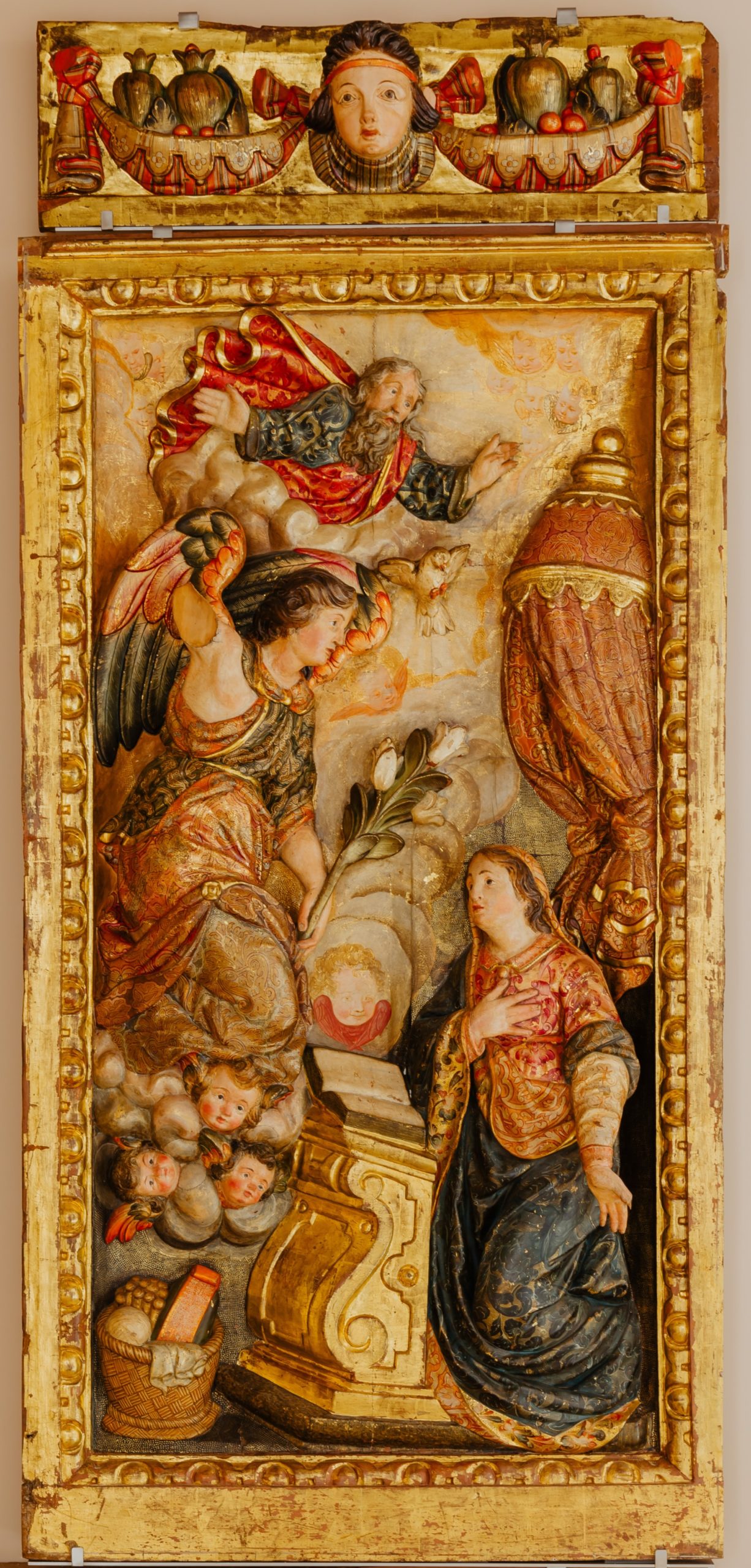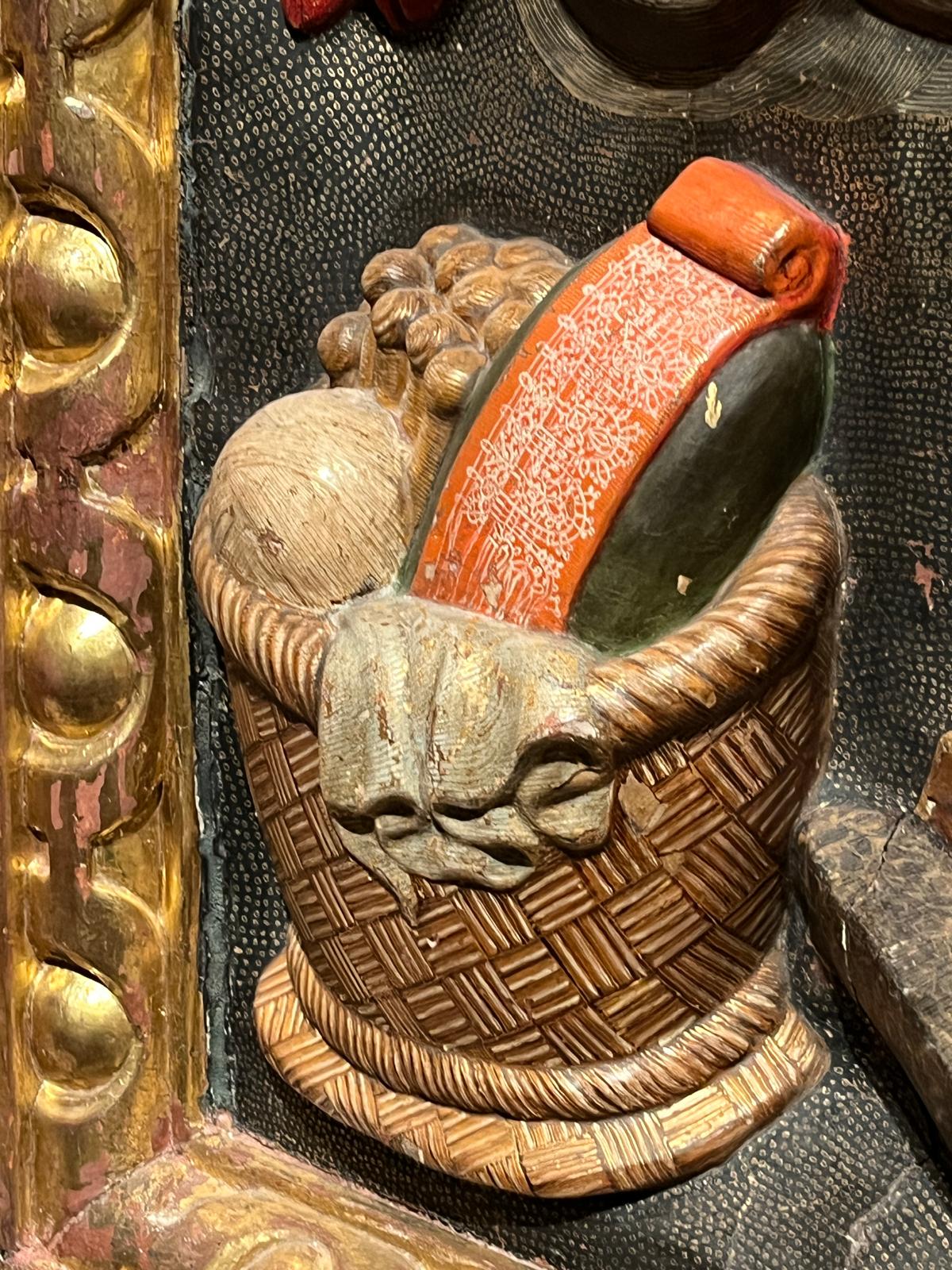We’ve written before about the famous Catalan song La Mare de Déu. The song tells how the Virgin Mary goes to the lace school with a lace pillow, alongside her friends Saint Susanna and Saint Pauletta, and there receives the news from the Angel Gabriel that she will have a son, Jesus. The song prompted us to hunt for paintings of the Virgin Mary depicted as a lacemaker. We had some success, but until now we’ve not seen such an image from Catalonia itself.
In the seventeenth century, the town of Manresa in Catalonia was the centre of an artistic industry, producing altarpieces and other religious sculptures for churches. Many families were involved in this craft, but one of the best known was the Grau family, founded by Joan Grau. Their work can be found all over Catalonia.
In about 1642, Joan Grau created an altarpiece for the Sant Pere Màrtir church in Manresa, which is now in the town’s Museum of Baroque Art. This altarpiece celebrated a particular devotional practice associated with the Madonna, the cult of the rosary, a set of prayer-beads which are meant to aid prayer. It was commissioned by the Confraternity of the Virgin of the Rosary. The altarpiece was made up of multiple panels, which narrated the lives of Mary and Jesus, through fifteen ‘Mysteries’. The first of these mysteries is the Annunciation.
The church of Sant Pere Màrtir was destroyed during the Spanish Civil War, but a surviving photograph shows the altarpiece in position, with the panel representing the Annunciation visible at the bottom left.

Joan Grau’s Rosary altarpiece in situ in the Church of Sant Pere Màrtir, Manresa. Museu del Barroc de Catalunya.
But the detail of this bas-relief is easier to see in a photo from the Museum.

The Annunciation panel, from Joan Grau’s rosary altarpiece. Museu del Barroc de Catalunya.
We see the Virgin Mary reading a devotional book, a common motif, as the Angel Gabriel appears, carrying the white lilies that symbolize purity, again a common motif. And as usual in depictions of the Annunciation, there is a workbasket on the floor. But unlike the usual embroidery, this basket contains the typical tall Iberian lace pillow, with a pattern, as well as a bundle of bobbins.

Detail from the Annunciation panel, from Joan Grau’s rosary altarpiece. Museu del Barroc de Catalunya.
We still don’t know whether the song itself dates back to the same epoque – the earliest version we’ve discovered so far is Milá y Fontanals’, which only dates from 1882. But this sculpture at least suggests the idea that Mary was a lacemaker has a longer history in Catalonia.
A big thank you to our colleagues at the Museu Arenys de Mar and the Museu del Barroc de Catalunya for alerting us to this depiction, and allowing us to use their images.






Leave a Reply